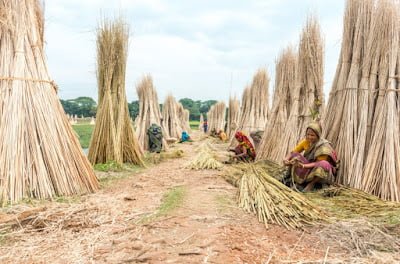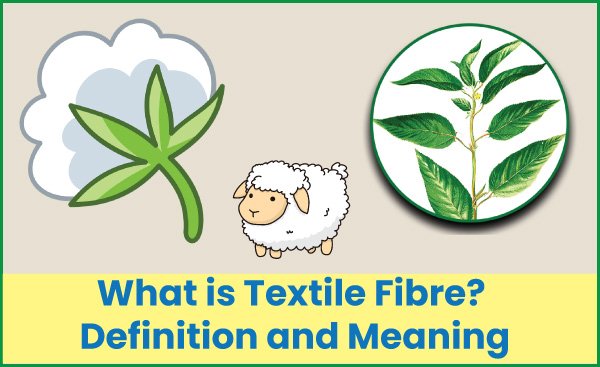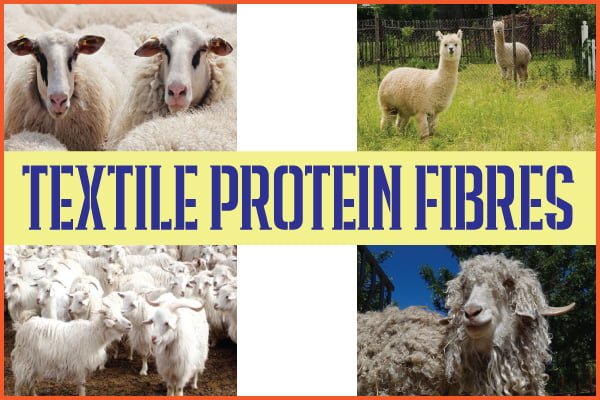Jute: The Golden Fibre | How Jute is Cultivated [Images]
Last updated on October 3rd, 2023 at 11:00 am
The Golden Fibre
Bast fibres are obtained from stem, bark or leaf of certain vegetable plants. Jute fibre is obtained from the bark of Jute plants. This is the most important tropical fibre to meet world’s demand as cheaper packing materials for various commodities.

Some countries where Jute cannot be cultivated have since been trying to grow a suitable substitute. As a result “Kenaf” has been produced in certain parts of America as Jute Substitute. This “Kenaf” resembles jute fibre in appearance and physical structure but it is unsuitable for use as warp yarn in the manufacture of cloth due to its poor strength. Therefore Jute fibre is still remains unrivalled for the manufacture of cheaper Bags, Sacks, packs, Carpets etc.
Types of Jute Fibre
The commercial Jute fibre is obtained from two kinds of Jute plants known as corchorus capsularies or corchorus capsularus and corchorus olitorius respectively.
You may also like: All The Natural Cellulose Fibres
Jute Growing Countries
Jute is cultivated on a very large scale in East Bengal and Bangladesh. An appreciable quantity is also grown in West Bengal, Behar, Orissa, Assam, Bombay and Uttarpradesh of India but fibre qualities of Jute produced in these areas are not very sound. Attempts have been made to grow Jute in various parts of the tropics, especially in the Nile Valley, Nigeria and many other parts of Africa, Brazil, Indo-China, Japan, Manchuria, Formosa and Myanmar but the quantities produced in these countries are very small as compared to those of East Bengal and India.
You may also like: What is Textile Fibre?
Requirements for Cultivation and Growth of Jute
- High temperature up to 950F with a minimum of 800F during the period of growth.
- Well penetrative soil of fairly fine texture.
- Suitable seeds.
- Rainfall of over 40”. This rainfall should be distributed that while the young plants have sufficient moisture, the bulk of the fall should take place when the crop is more matured.
- A sufficient supply of water for retting the plants and washing the stripped fibres.
- A suitable and sufficient supply of labor to handle the crop at the proper time.
- Facilities for placing the fibres in the market.
Cultivation of Jute
Preparation of land
Jute seeds are small. Therefore, a very fine preparation of land is necessary. The country plough made of wood is used generally for ploughing the land which does not invert the soil very well. So, the land is ploughed and cross ploughed, that is, if the first ploughing is in the direction of North-South, the second ploughing is then in the direction of East-West. This ploughing is repeated 6 to 8 times. Between ploughings, the land is laddered to break down the lumps of earth and level the ground.
Sowing
The methods of sowing are – Broad cast and line sowings. In broad cast sowing, the seeds are thrown by hand and by the method known as cross sewing, that is, half the seeds are sown say, North-South direction and then the remaining sown, say, East-West direction. This method permits uniform distribution of the seeds over the ground. After sowing, the land is lightly laddered to conceal the seeds and consolidate the surface of the land. About 12 to 15 lbs of seeds are necessary per acre of land.
Line sowing is done where machine ploughing and machine sowing are used. In this method the lines of seeds are 10 to 12 inches apart and the seeds are about 3 to 4 inches apart in the line.
This method of sowing permits easy weeding and thinning of plants as well as gives better yield both in quality and quantity.
Time of Sowing
Corchorus capsularies variety can be sown any time after January depending upon the position of lands and weather condition. But corchorus olitorius variety should not be sown before March because the plants have a tendency of branching, premature flowering and reverting to wild bush forms without proper growth if sown too early. Time of sowing and harvesting greatly depends upon the weather conditions in the respective areas.
Wedding and Thinning
If the weather is favorable, germination takes place within 4 to 5 days after sowing the seeds. An adequate distribution of rainfall is very important during the early period of growth of the Jute plants. When the plants are about 1 to 2 inches high, the land is lightly harrowed to stir the land surface to absorb and retain moisture. First weeding also carried out at this stage when the plants are about 2 to 3 feet high. In between these, weeding is carried out if necessary. During weeding, plants are left 4 to 6 inches apart. Wider spacing produces better and taller plants giving better and finer fibres of good spinning quality. Weeding and thinning must be done at the correct time with minimum of delay.
Harvesting Time
The value of Jute lies in its fibre. The quality and quantity of the fibres are dependent upon the maturity of the plants. Therefore, selection of proper harvesting time is very important.
Jute plants may be harvested from the bud stage until the young fruits have just set. At this stage the plants attain their full height and fibre extraction is easy. Fibres produced are of regular quality, maximum length, good color and good lusture with minimum roots.
Jute may also be harvested when the fruits have fully formed. At this stage, the yield of the fibre is more but retting takes long time and the fibre is distinctly harsh. The fibres also have poor lusture and the roots are more pronounced.
Cutting and Retting of Jute Plants
Cutting of Jute plants is usually done by hand with a ‘dao’. The cut stems are tied into bundles of about 9 to 12 inches in diameter. The bundles are then laid on the ground for a period to allow the stem to sweat and soften and leaves fall off. The bundles are then taken to a convenient location of water. These are then arranged in layers in water. They sink partly in water by their own weight. Number of layers of bundles may vary from 3 to 5. The top layre is covered with logs, clods of earth etc. to complete their submersion.

During steeping, fermentation takes place. This softens and separates the fibres from the plant tissue. Retting progresses from crop end to root end. Retting process is complete in 15 to 20 days depending upon the temperature of water. 800 to 850 F temperatures is favorable for retting process. At lower temperature and in running water retting process may take about one month. To judge the right time for stripping the fibres from the retted plants, it is necessary to make periodic checks on samples from different parts of the pond or where the plants have been kept for retting. When it is found that fibres can be separated from the stem at ease; stripping, washing and drying of the fibres should be done as quickly as possible.
Stripping of the Jute Fibres
There are two methods of fibre stripping from the retted plants:
- Stripping by individual stem. The bundles of stems are removed from water, allowed to drain off and then each stem stripped separately. Fibres are made up into handful and then washed.
- Banch stripping: The workers stand in water. He takes some stems in his left hand beats the roots of the stems with a wooden mallet. When the root ends are sufficiently crushed, they are broken off. Loose fibres are then drawn to permit easy separation from the rest of the stems. The stripped of fibres are the washed.

Drying of Fibres
The fibre is air dried in the sun by hanging on bamboo poles. Time of drying depends upon weather condition, usually 2 to 3 days. The farmer then disposes his Jute through a local dealer who conveys them to the nearest market or to a collecting agency of a big dealer in loose Jute.

You may like also: What Is Technical Textile?
Defects in Jute
Rooty Fibres
Lower parts of the Jute fibres from which barks and gums have not been completely removed. Root ends are cut off and used for low grade yarn. Defects may be due to under retting or the plants being allowed to stand in the field after water has receded.
Specky Fibres
Uneven retting or insufficient washing often causes the outer bark to adhere in places on the fibres showing the specky. These fibres require lying longer in the batch and increased carding for their use.
Croppy Fibres
Hard wiry top end fibres caused by careless steeping of the plants for retting. Such fibres should be cut off and used for low grade yarn.
Knotty Fibres
Fibres having knots in places due to insect bite or puncture in the growing plants. These fibres resist separation should be cut off and used for low grade yarn.
Dead Fibres
Over retting or sorting of Jute fibres in moist condition makes them dull, poor in strength and inferior for spinning; should be mixed with other fibres and used for low grade yarn.
Runners
These are long and hard barky ribbon of fibres; may be due to uneven steeping and careless washing. They resist separation; should be cut off and used for low grade yarn.
Hunka
Defect caused by non-removal of dried up base and hard bark from the fibres; should be cut off and used for low grade yarn.
Weak Fibres
This defect may be due to various reasons, specially due to over retting and careless stripping; should be mixed up with better fibres for spinning.
Sticky, Woody and Shive
Fibres from short plants that cannot be properly stripped and cleaned contain broken pieces of Jute sticks etc; these fibres require increased carding for their use.
Mossy
If Jute pants grow in standing water, mosses grow side by side and adhere to Jute plants causing them to be mossy; mossy portion should be cut off and used for low grade yarn.
Heart Damage
This defect is caused if Jute fibre contains excess moisture when baled; centre of the bale becomes badly tendered and in some cases fibres reduced to powder; fibres should be sorted out and infected fibres be discarded.
You may like also: Cotton VS Wool – Which One Is More Comfortable?
Jute Fibre Characteristics
Length
Long fibres which allow removal of roots leaving a good length for manufacturing purposes command higher price short fibres of the same character; medium qualities 6 to 8 feet long.
Strength
Jute fibres are not particularly strong when compared with some other best fibres but have good tensile properties. Fibres are naturally hard and brittle and break off with abrasion. Storage of Jute in moisture reduces its strength.
Lusture
Better qualities have fairly high lusture; matt and pitted surface indicate weak fibres.
Uniformity in Color
This property is quite evident in better qualities. Inferior qualities are very irregular in this respect.
Color
Best qualities are pale white or silvery grey, common qualities are brownish or greenish and inferior qualities and roots are usually darker without any lusture.
Roots
Base portion of the Jute stems is more rigid and has a stronger supporting bark than the rest of the stem. In high grade sorting root portions are removed by cutting and baled separately known as bale cuttings.
Cleanliness
Cleanliness of fibre is an essential factor of high grade. Adhering portions of bark and specks are undesirable which affect grading according to their degree of presence.
Assortment or Grading of Jute
Two types of grading of raw Jute are in practice:
- Kutcha grading of raw Jute from which roots have not been cut.
- Pucca grading of raw Jute from which roots have been cut. The assortment may include a certain percent of cuttings.
The following terms are important in connection with the grading of raw jute:
- Color average: Colors ranging between the best good color and dark color.
- Strength average: Strength equivalent to that of district fibre.
- Light color: Color ranging from off white to light grey.
- Strong: Strength equivalent to that of Jute fibre.
- Handling: This refers to the actual cutting and cleaning of root ends.




good
Thanks.